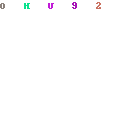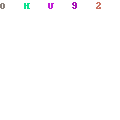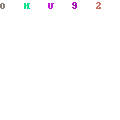You've tried hard with everything but failed? The post on this page will give you a satisfying answer. If you cannot proceed yourself, you can simply click here to ask Tee Support experts 24/7 available for professional help.
Know Something about Piracy Automatic Protection System
“Stop Online Piracy Automatic Protection System - Your Computer is Locked!” is a scam message that allegedly generated by US government and accuses affected PC users of violating SOPA. Please be noted that SOPA stays controversial, which means it is not a law anyway enacted by the government. Stop Online Piracy Automatic Protection System Virus is a new variation of Ukash Virus that is responsible for producing FBI Moneypak and the like. When this ransomware infiltrates your PC it will encrypt your files. The interesting thing about this ranosmware infection is that it's authors are giving a possibility to test their decryption services.A user of infected PC can send the encrypted file to the creators and they will send the decrypted file back proving that they are able to decrypt the files. The fact that this ransomware encrypts user’s files makes it especially rogue, most commonly such security infections only blocks computer user's desktop but doesn't mess with the files. Thus a victim cannot launch any of installed programs; the Internet connection is also broken. To be short the parasite gains the total control over a computer. It demands a ransom from victims to be paid $200 via Ukash or Paysafecard to receive an unlock code. Do not believe the pop-up notification and hurry up to effect the payment. Even if you pay your PC will be still hijacked. More over the official organizations do not collect the fines in such way. They do not send the official notifications via Internet. So it is handiwork of cyber crooks. The only thing you should do is to exert yourself and remove this hoax. Ransomware can be difficult to remove; however, it is not impossible. You will find the detailed step-by-step tutorial on how to unblock your compromised PC, should you be confused about the procedure, please contact Tee Support experts 24/7 available for further help.

Explicit Steps to Walk You through Manual Removal of Piracy Automatic Protection System
Step1.:Reboot your computer and log into Safe Mode with Networking. As the computer is booting but before Windows launches, tap the "F8 key" continuously which should bring up the "Windows Advanced Options Menu" as shown below. Use your arrow keys to highlight "Safe Mode with Networking" option and press Enter key.
Step2: Launch msconfig. and disable startup items rundll32
Click "start" —> put msconfig. in "search box" —> press Enter —> disable rundll32

Step3: Reboot your system one more time.
Step4: Reboot into safe mode with command prompt. There should not be blank screen, nor the fake message screen.

Step5: Run regedit. Search for Winlogon.
Click "start" —> put regedit in "search box" —> press Enter —> press and hold Ctrl+F to search for Winlogon


Step6:There will be a key labeled Shell in the right pane. It should reference Explorer.exe or be blank. If not, right click it and replace it with explorer.exe.
Step7: Save changes, reboot to safe mode with networking.
Step8: Run msconfig and disable all unnecessary startup entries.
Related files and folders:
%Temp%\<random>.exe
%StartupFolder%\ctfmon.lnk
%Temp%\<random>.exe
%StartupFolder%\ctfmon.lnk
Associated registry entries:
HKEY_LOCAL_MACHINE\SOFTWARE\Microsoft\Windows NT\CurrentVersion\Winlogon\"Shell" = "[SET OF RANDOMCHARACTERS].exe"
HKEY_CURRENT_USER\Software\Microsoft\Windows\CurrentVersion\Explorer\"CleanShutdown" = "0"HKCU\Software\Microsoft\Windows\CurrentVersion\Run\Inspector %AppData%\Protector-[ rnd].exe
Tips for Prevention:
- Use a firewall to block all incoming connections from the Internet to services that should not be publicly available. By default, you should deny all incoming connections and only allow services you explicitly want to offer to the outside world.
- Enforce a password policy. Complex passwords make it difficult to crack password files on compromised computers. This helps to prevent or limit damage when a computer is compromised.
- Ensure that programs and users of the computer use the lowest level of privileges necessary to complete a task. When prompted for a root or UAC password, ensure that the program asking for administration-level access is a legitimate application.
- Disable AutoPlay to prevent the automatic launching of executable files on network and removable drives, and disconnect the drives when not required. If write access is not required, enable read-only mode if the option is available.
- Turn off file sharing if not needed. If file sharing is required, use ACLs and password protection to limit access. Disable anonymous access to shared folders. Grant access only to user accounts with strong passwords to folders that must be shared.
- Turn off and remove unnecessary services. By default, many operating systems install auxiliary services that are not critical. These services are avenues of attack. If they are removed, threats have less avenues of attack.
- If a threat exploits one or more network services, disable, or block access to, those services until a patch is applied.
- Always keep your patch levels up-to-date, especially on computers that host public services and are accessible through the firewall, such as HTTP, FTP, mail, and DNS services.
- Configure your email server to block or remove email that contains file attachments that are commonly used to spread threats, such as .vbs, .bat, .exe, .pif and .scr files.
- Isolate compromised computers quickly to prevent threats from spreading further. Perform a forensic analysis and restore the computers using trusted media.
- Train employees not to open attachments unless they are expecting them. Also, do not execute software that is downloaded from the Internet unless it has been scanned for viruses. Simply visiting a compromised Web site can cause infection if certain browser vulnerabilities are not patched.
Note: you can have some inspirations by clicking here to view similar video on how to remove ransomware. Since it might be superbly difficult to delete Piracy Automatic Protection System virus manually, inexperienced Windows users with little knowledge about ransomware removal should get instant professional tech support from Tee Support experts 24/7 online.


No comments:
Post a Comment